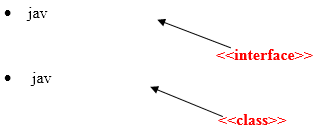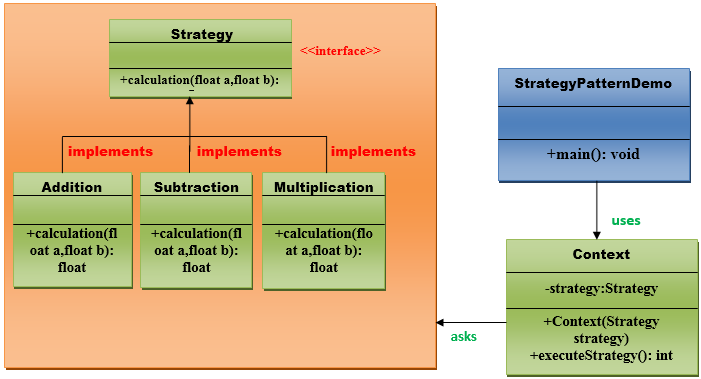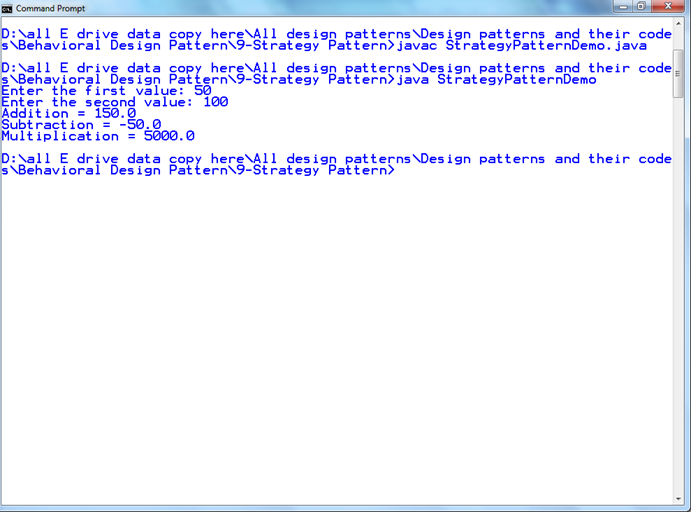Strategy Pattern
A Strategy Pattern says that “defines a family of functionality, encapsulate each one, and make them interchangeable”.
The Strategy Pattern is also known as Policy.
Benefits:
- It provides a substitute to subclassing.
- It defines each behavior within its own class, eliminating the need for conditional statements.
- It makes it easier to extend and incorporate new behavior without changing the application.
Usage:
- When the multiple classes differ only in their behaviors.e.g. Servlet API.
- It is used when you need different variations of an algorithm.
Strategy Pattern in (Core Java API’s) or JSE 7 API’s:

Strategy Pattern in (Advance Java API’s) or JEE 7 API’s:

UML for Strategy Pattern:

Implementation of Strategy Pattern:
Step 1:
Create a Strategy interface.
public interface Strategy {
public float calculation(float a, float b);
}// End of the Strategy interface.
Step 2:
Create a Addition class that will implement Startegy interface.
//This is a class.
public class Addition implements Strategy {
@Override
public float calculation(float a, float b) {
returna + b;
}
}// End of the Addition class.
Step 3:
Create a Subtraction class that will implement Startegy interface.
//This is a class.
public class Subtraction implements Strategy {
@Override
public float calculation(float a, float b) {
returna – b;
}
}// End of the Subtraction class.
Step 4:
Create a Multiplication class that will implement Startegy interface.
public class Multiplication implements Strategy {
@Override
public float calculation(float a, float b) {
return a * b;
}
}// End of the Multiplication class.
Step 5:
Create a Context class that will ask from Startegy interface to execute the type of strategy.
public class Context {
private Strategy strategy;
public Context(Strategy strategy) {
this.strategy = strategy;
}
public float executeStrategy(float num1, float num2) {
return strategy.calculation(num1, num2);
}
}// End of the Context class.
Step 6:
Create a StartegyPatternDemo class.
import java.io.BufferedReader;
import java.io.IOException;
import java.io.InputStreamReader;
public class StrategyPatternDemo {
public static void main(String[] args) throws NumberFormatException, IOException {
BufferedReader br = new BufferedReader(new InputStreamReader(System.in));
System.out.print(“Enter the first value: “);
float value1 = Float.parseFloat(br.readLine());
System.out.print(“Enter the second value: “);
float value2 = Float.parseFloat(br.readLine());
Context context = new Context(new Addition());
System.out.println(“Addition = “ + context.executeStrategy(value1, value2));
context = new Context(new Subtraction());
System.out.println(“Subtraction = “ + context.executeStrategy(value1, value2));
context = new Context(new Multiplication());
System.out.println(“Multiplication = “ + context.executeStrategy(value1, value2));
}
}// End of the StrategyPatternDemo class.
Output:
